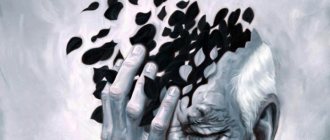Causes of vegetative-vascular dystonia
The main causes of vegetative-vascular dystonia include the following.
- Prolonged stress.
- Mental trauma.
- Physical overexertion.
- Bad habits (smoking, drinking alcohol).
- Negative environmental factors.
- Hereditary predisposition.
- Psycho-emotional overload.
- Sudden and significant changes in environmental conditions.
- Mental fatigue.
- Age-related hormonal changes.
- Severe intoxication.
In addition to the listed reasons that have a direct impact on the appearance of vegetative-vascular dystonia, there are a number of factors that themselves cannot cause VSD, but reveal a predisposition to it. The longer and stronger their exposure, the higher the likelihood of pathology occurring.
Violation of the vegetative functions of the body is promoted by:
- smoking;
- frequent and prolonged work at the computer;
- frequent abuse of alcoholic beverages;
- lack of sleep;
- uncontrolled medication use;
- frequent consumption of very spicy foods.
What is VSD
The autonomic nervous system, also called the autonomic nervous system, is part of the nervous system of the human body. It is responsible for controlling the activity of internal organs, metabolic processes occurring in the body, the functioning of blood and lymphatic vessels, as well as the activity of the endocrine glands. Thus, the autonomic nervous system plays an important role in maintaining homeostasis (constancy of the internal environment) and adaptation to changing environmental conditions.
The autonomic nervous system is responsible for the innervation of the entire body, organs and tissues. Moreover, its work is in no way subordinate to the will of a person, but is controlled independently of desires by the cerebral cortex. That is, a person cannot voluntarily stop the heart or influence the speed of intestinal peristalsis.
Autonomic nerve centers are also located in the brain stem, hypothalamus and spinal cord. Therefore, any disturbances in these organs are directly reflected in the quality of functioning of the autonomic nervous system, and can lead to the development of autonomic disorders.
Thus, all vital processes of the body are under the control of the autonomic nervous system, namely:
- heart rate;
- blood pressure level;
- thermoregulation;
- activity of salivary, sweat, endocrine glands;
- frequency and depth of breathing;
- digestion of food and intestinal motility;
- the condition of the smooth muscles of internal organs and the walls of blood vessels;
- processes of growth and reproduction;
- metabolic processes;
- urination, etc.
Anatomically and functionally, the autonomic nervous system is divided into 3 sections:
- Sympathetic - responsible for metabolism, energy consumption and mobilization of forces for active activity. Its sphere of influence includes heart function and blood pressure levels. Therefore, the sympathetic department allows the human body to prepare as much as possible for fight or active work.
- Parasympathetic - regulates the functioning of organs mainly during sleep and passive rest, and is responsible for restoring spent energy reserves. It is responsible for reducing heart rate, blood pressure and increasing peristalsis, which makes it possible to replenish energy reserves from food received.
- Metasympathetic - ensures communication between internal organs and the preservation of local autonomic reflexes.
All parts of the autonomic nervous system are in a certain relationship with each other, which ensures proper regulation of the body’s functioning. At the same time, the most important organs from the point of view of life support have double innervation with the opposite effect. But when the slightest deviation from the norm occurs, under the influence of stress, the balance between the sympathetic and parasympathetic departments is disrupted, which leads to the predominance of one of them over the other. The result of this is the development of vegetative-vascular dystonia.
Vegetative-vascular dystonia is a syndrome that combines various disorders of autonomic functions that are the result of impaired neurogenic regulation. This occurs when the balance between the activity of the sympathetic and parasympathetic parts of the autonomic nervous system is disturbed, which can be due to the action of a huge variety of the most disparate causes.
Thus, VSD is a multifactorial disorder that can be regarded as one of the symptoms of an existing neurological or somatic disease and consists of changes in the functioning of internal organs. Sometimes the root cause of the development of vegetative-vascular dystonia cannot be established.
Vegetative-vascular dystonia is often also called cardioneurosis, dysvegetosis, neurasthenia and some other terms.
Treatment of vegetative-vascular dystonia
If treatment is started in a timely manner, the result in most cases will be positive. However, it may take several months. The duration of therapy directly depends on the form of vegetative-vascular dystonia and varies between 4–10 months. It is impossible to prescribe a universal remedy for VSD that will definitely help overcome the pathology.
The main role in the fight against vegetative-vascular dystonia is played by a healthy lifestyle, feasible physical activity and lack of stress. In addition, to achieve results, you need to give up smoking and drinking alcohol, normalize your work and rest schedule, adhere to proper nutrition, diversifying your diet with vegetables, fruits, nuts and dairy products.
What is prescribed for VSD? Treatment of vegetative-vascular dystonia is a whole range of measures, which may include the following:
- diet;
- taking medications;
- physical therapy;
- breathing exercises;
- acupuncture;
- massage;
- balneotherapy;
- phototherapy;
- psychotherapy;
- physiotherapeutic procedures (massage, breathing exercises, etc.).
There are a lot of drugs prescribed for VSD. Their choice depends on the symptoms of the pathology, the person’s health status, age and other factors. Therefore, only a doctor can tell you what to take for VSD. For each patient, the doctor develops an individual treatment regimen (based on the clinical picture), which may include the following groups of drugs:
- soothing herbal remedies;
- antidepressants;
- tranquilizers and anxiolytics;
- nootropics;
- vascular drugs;
- psychotropic drugs;
- adaptogens, etc.
How does an attack go?
During an attack of VSD, a sympathoadrenal crisis is observed, as a large amount of adrenaline is suddenly released into the blood. Then it starts suddenly. At the same time, you begin to feel your heartbeat, your blood pressure and body temperature rise. In this case, the skin may turn pale and chills may occur. This is accompanied by the appearance of strong fear for one’s own life. This condition lasts on average 20–30 minutes, but can last 2–3 hours, after which the condition gradually improves.
Attacks may occur several times a week or several times a day.
After the attack ends, the patient feels a strong urge to urinate, during which a large volume of light-colored urine is released. Fear is replaced by severe weakness, as there is often a sharp decrease in blood pressure. In some cases, this is accompanied by tremors in the legs, up to the inability to walk normally.
After an attack, people tend to become anxious and fear new episodes. Therefore, depression often occurs, which makes the situation even worse. Also, patients with VSD may tend to refuse to communicate with other people because they are ashamed of their illness and its manifestations. But at the same time, they are also afraid of not receiving much-needed medical care at the right time, which also does not help improve the situation.
Also, an attack of VSD can occur with a vagoinsular crisis. In this case, the attack begins with the appearance of pre-syncope symptoms:
- noise in ears;
- darkening of the eyes;
- sudden weakness;
- a feeling of unreality of what is happening.
These phenomena are observed for a very short period of time, and are replaced by loss of consciousness.
During a vagoinsular crisis, severe abdominal pain and a powerful, urgent desire to empty the intestines may occur. During an attack, accelerated intestinal motility, decreased blood pressure, slowed heart rate and severe sweating are observed. Patients usually complain of cold sweat with a pronounced feeling of heat. They are often overcome by indescribable melancholy and strong fear appears.
Very rarely, an attack of VSD occurs of a mixed type, in which symptoms typical of a vagoinsular and sympathoadrenal crisis are observed. Most often in such cases it is observed:
- shortness of breath, up to a feeling of suffocation;
- chest pain;
- increased heart rate;
- severe dizziness;
- unsteady gait;
- very strong fear of death;
- a feeling of unreality of what is happening.
Drug elimination of symptoms of vegetative-vascular dystonia
Symptomatic treatment is aimed at eliminating the manifestations of vegetative-vascular dystonia.
- For rapid heartbeat and periodic surges in blood pressure, beta-blockers are indicated.
- For VSD and panic attacks, taking tranquilizers is indicated.
- Heart pain can be relieved with sedatives. For bradycardia (heart rate less than 50 beats per minute), it is recommended to take a drug that stimulates heart contractions.
- Vasodilators are also necessary for VSD. ACE inhibitors have this effect.
- If pain (in the abdomen, joints, muscles, heart) due to VSD cannot be relieved, doctors may prescribe tricyclic or serotonergic antidepressants. Typically, a short course of taking these drugs quickly relieves pain.
- With the hypertensive type of vegetative-vascular dystonia, agents for the blood vessels of the brain are needed that improve blood circulation. These drugs will relieve dizziness due to VSD caused by high blood pressure.
- If constipation appears against the background of VSD, then you should not only adjust your diet, where fiber-rich foods will predominate, but also, if necessary, take laxatives recommended by your doctor.
- If the patient has a tendency to diarrhea, he, on the contrary, needs to limit the consumption of foods containing fiber and take fixatives as necessary. Also in this case, sorbents can be used.
- To eliminate signs of venous insufficiency, venotonic drugs may be prescribed. In addition, such tablets help with headaches due to VSD and eliminate tinnitus.
- For headaches due to low blood pressure, it is recommended to take tonics.
Thus, along with the treatment of the underlying pathology, a fairly wide range of tablets for VSD are used to eliminate the unpleasant symptoms of vegetative-vascular dystonia.
Types of VSD
The nature of the manifestation of signs of VSD directly depends on the condition of the blood vessels. Based on this, the following types of vegetative-vascular dystonia are distinguished:
- hypertensive;
- hypotonic;
- mixed;
- cardiac;
- vagotonic.
But symptoms are extremely rarely present all the time. Most often they are in the nature of attacks. Not all of the signs characteristic of a particular type of vegetative-vascular dystonia always appear. Moreover, this is rare. Typically, patients complain of 2-3 disorders, the presence of which, in combination with the results of the examinations, makes it possible to determine the specific type of vegetative-vascular dystonia.
Based on how VSD occurs, there are 3 degrees of severity of the disorder:
- mild – patients fully retain their ability to work, symptoms of VSD do not cause them significant discomfort, and there are no vegetative crises;
- moderately severe – periods periodically occur during which a person loses ability to work due to exacerbation of vegetative-vascular dystonia and the development of a vegetative crisis;
- severe - a long, persistent course of VSD with frequent periods of exacerbation and crises, which leads to a significant decrease in performance.
Hypertensive type
Patients experience pronounced vascular tone, as well as a persistent increase in blood pressure. Their main complaints focus on the occurrence of:
- rapid heartbeat;
- hot flashes;
- headaches;
- constant fatigue;
- nausea, vomiting, attacks of which are not associated with eating;
- decrease in appetite up to its complete loss;
- sweating (during an attack there is severe sweating of the palms);
- causeless but strong fear;
- flickering “flies” before the eyes.
Hypotonic type
Characterized by low blood vessel tone and low blood pressure. Therefore, patients are often annoyed by:
- episodes of darkening of the eyes;
- a sharp decrease in blood pressure;
- severe weakness;
- loss of consciousness;
- pale skin;
- nausea, heartburn;
- changes in bowel habits (diarrhea or constipation);
- inability to take a full breath.
It can be noted that in patients with VSD of the hypotonic type, the palms and feet are constantly cold.
Mixed type
With this variant of VSD, variability in vascular tone is observed, so blood pressure can fluctuate within a fairly wide range. It can rise sharply to high levels and then suddenly drop to extreme levels.
In such cases, there is a change in the symptoms of VSD, which occurs according to the hypertensive type, with manifestations of VSD of the hypotonic type. This significantly affects the lives of patients, as attacks of weakness, profuse sweating and fainting states are replaced by hot flashes, tachycardia and headaches.
During an attack, there is often a fear of imminent death and the inability to take a full breath, which further aggravates the situation. Pain in the heart area may be present.
Cardiac type
This type of VSD is diagnosed when aching, throbbing pain occurs in the heart area, which does not have a significant effect on a person’s general well-being. They may be accompanied by arrhythmia and profuse sweating, but the examinations carried out do not reveal heart pathologies.
Vagotonic type
For this type of vegetative-vascular dystonia, the occurrence of breathing disorders is typical. Patients often complain of the inability to take a full breath and a feeling of tightness in the chest. In this case, there may be a tendency to lower blood pressure and slow heartbeat. But with the vagotonic type of VSD, there is an increase in salivation and changes in the functioning of the organs of the digestive system.
Eltacin® in the treatment of VSD
Therapy for VSD should be aimed at eliminating its cause, and not masking the symptoms. This is precisely why Eltacin® was developed. It contains 3 amino acids: cystine, glycine and glutamic acid. Their combination promotes the production of glutathione in the body - one of the powerful and natural antioxidants in the body, which neutralizes the effects of free radicals, prolongs the life of cells and prevents their death, normalizes the supply of oxygen to tissues and individual cells and helps enzymes maintain their functions. Thanks to this, the drug allows you to eliminate the symptoms of VSD, as well as influence the root of the problem and restore the balance between organs and systems, disturbed by the negative effects of free radicals.
Eltacin®:
- is the strongest endogenous antioxidant;
- sold at an affordable price.
- dispensed without a doctor's prescription;
Diagnostics
To diagnose and prescribe treatment for VSD, you must consult a neurologist. Before the consultation, it is best to make a detailed list of complaints. This will help the specialist not only detect VSD, but also suggest what caused its development. The doctor will definitely conduct a thorough survey, during which he will also find out the presence and nature of the prerequisites for the development of vegetative-vascular dystonia.
Then the neurologist proceeds to the examination. The doctor assesses the condition of the skin, measures the pulse, blood pressure, sometimes using an orthostatic test (2 measurements are taken: one in a lying position, the second after taking up a vertical position), listens to the lungs and heart. To assess the activity of the sympathetic and parasympathetic autonomic nervous system, he may pass the end of the hammer handle over the skin.
After completing the examination and assuming the presence of VSD, the neurologist must prescribe a set of studies that will help detect or confirm existing assumptions about the causes of the development of the disorder. For this purpose, patients are prescribed:
- UAC and OAM;
- blood sugar test;
- blood test for TSH, T3 and T4 (thyroid hormones);
- biochemical blood test to determine the concentration of potassium, cholesterol, creatinine, urea and other compounds;
- ECG;
- fluorography of the chest organs;
- rheoencephalography;
- MRI;
- Ultrasound scanning of neck vessels;
- EEG.
In our clinic, you can also learn in more detail about the composition of your body and the state of the vascular system, which is involved in the blood supply to internal organs, skeletal muscles, and the brain. Our experienced doctors will explain the data obtained to you in detail. Bioimpendansometry calculates the ratio of fat, muscle, bone and skeletal mass, total fluid in the body, and basal metabolic rate. The intensity of recommended physical activity depends on the state of muscle mass. Metabolic processes, in turn, affect the body's ability to recover. Based on the indicators of active cell mass, one can judge the level of physical activity and nutritional balance. This simple and quick test helps us identify disturbances in the endocrine system and take the necessary measures. In addition, it is also very important for us to know the condition of blood vessels for the prevention of diseases such as heart attacks, hypertension, heart failure, diabetes and much more. Angioscan allows you to determine such important indicators as the biological age of blood vessels, their stiffness, stress index (which indicates heart rate), and blood oxygen saturation. Such screening will be useful for men and women over 30, athletes, those undergoing long-term and severe treatment, as well as everyone who monitors their health.
Consequences of VSD
Despite the fact that vegetative-vascular dystonia manifests itself quite severely, it has a positive prognosis. Of course, the risk of developing negative consequences is directly influenced by strict adherence to medical recommendations, especially regarding adherence to a daily routine, giving up bad habits and taking prescribed medications.
With a careful approach to the treatment of VSD, the risk of developing undesirable consequences is minimal. But if the problem is ignored, patients have a high chance of later encountering:
- tachycardia;
- hypertension that cannot be treated with traditional drugs to lower blood pressure;
- cardiomyopathy;
- diabetes mellitus type 2;
- urolithiasis and cholelithiasis;
- stroke, myocardial infarction.
VSD negatively affects the immune system. Therefore, patients with this diagnosis are much more likely than others to suffer from respiratory infections. In this case, a vicious circle is formed, since in acute respiratory infections attacks are observed more often.
0 0 votes
Article rating










